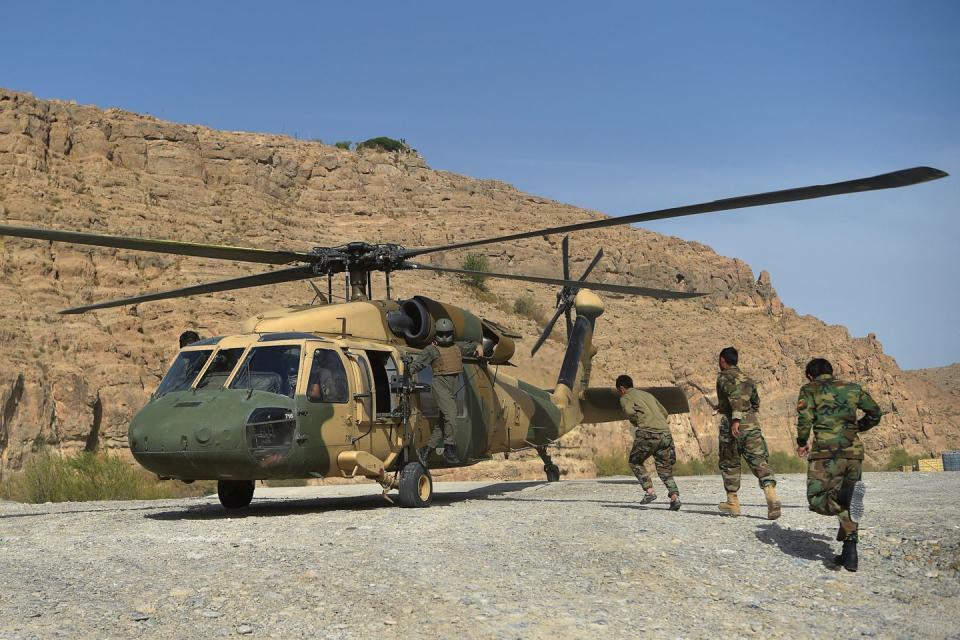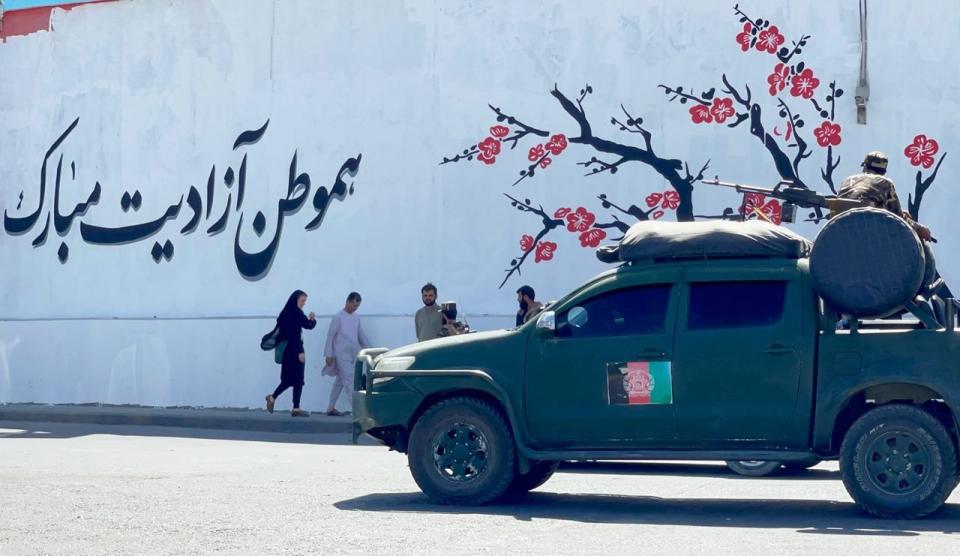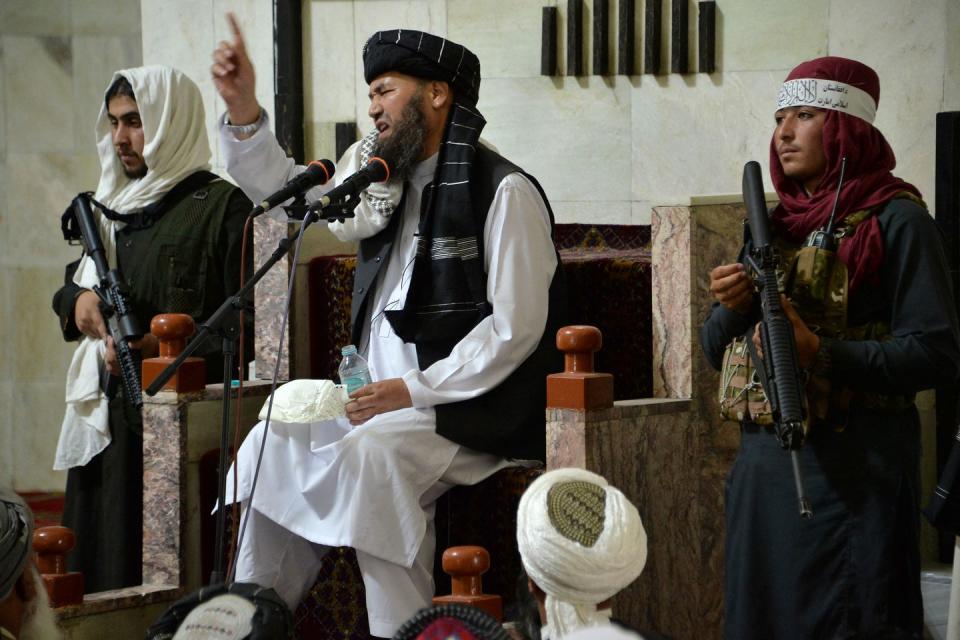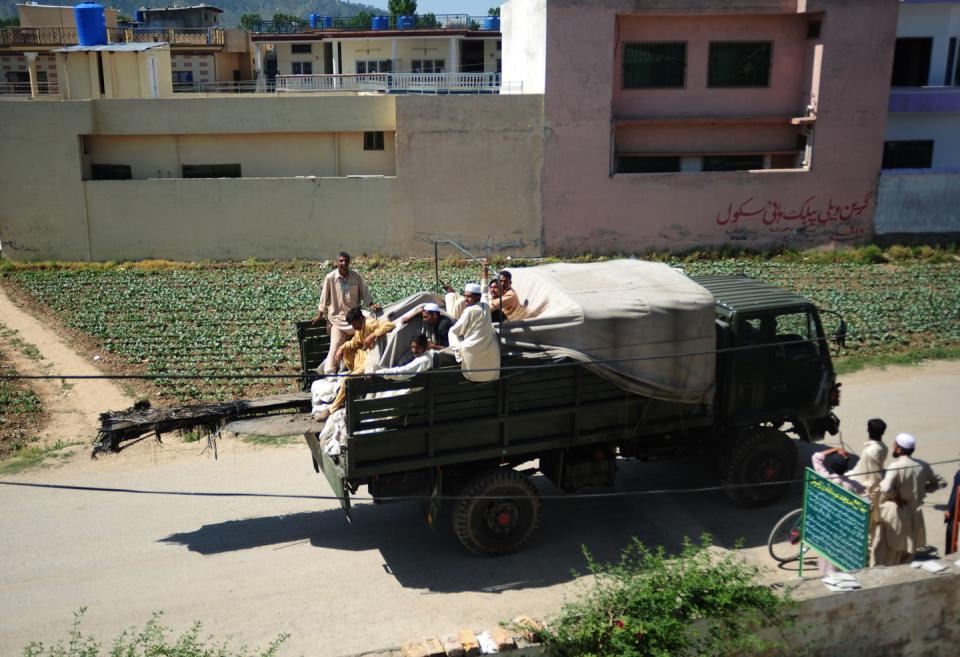No, the U.S. Didn’t Leave the Taliban $83 Billion in High-Tech Weapons
Critics of the Biden Administration claim the withdrawal from Afghanistan left the Taliban an arsenal of $83 billion in advanced weaponry.
Only a fraction of the U.S. aid sent to Afghanistan was actually spent on weapons and equipment.
Regardless, much of the equipment would not be of particular value to countries like Russia, China, or even Iran.
Mere days after the U.S. withdrawal from Afghanistan, critics of the operation seized on the false claim that the Biden Administration left behind an $83 billion arsenal of high-tech weapons for the Taliban to claim. Even worse, the critics say, the equipment is of intelligence value to America's enemies, like Russia and China.
In reality, the value of the scores of aircraft, thousands of ground vehicles, and hundreds of thousands of small arms is questionable at best, and would probably not be of interest even to a tech-starved adversary like Iran.
A variety of sources have made the claim, and most are accompanied by this graphic:
President Biden’s catastrophic withdrawal from Afghanistan resulted in scores of Americans being left behind and the Taliban acquiring an $85 billion US-taxpayer funded arsenal. Congress must assert its oversight authority and investigate this breach of our national security. pic.twitter.com/A7g4SH0Whe
— Rep. Russ Fulcher (@RepRussFulcher) September 2, 2021
Those numbers do sound impressive. According to the graphic, the Taliban inherited 22,107 Humvees, 789 wheeled armored vehicles, 169 tracked armored vehicles, and 50,000 light utility vehicles and trucks. They also received more than half a million machine guns, assault rifles, and 176 artillery pieces. In terms of military electronics, they got their hands on 162,043 radios and 16,035 pairs of night-vision goggles.

Large numbers of airplanes were also left behind. This includes 109 helicopters of U.S. and Russian origin, four C-130 Hercules transports, and more than 60 light transports, trainers, and ground-attack aircraft.
The U.S. provided all of this equipment to the Afghan security forces, including the Afghan National Army, Afghan National Police, and the Afghan Air Force. Given that the Taliban is now in total control of the country, it's reasonable to assume that the new rulers now have complete control over this massive inventory of equipment. (There are some exceptions, including Afghan government forces that fled to neighboring countries and pockets of resistance in the Panjshir Valley that may or may not still be holding out.)

First, let's take a look at the ground vehicles. The 22,174 Humvees are ordinary transport vehicles, and at best have value as an armored transport. The same goes for the 155 MaxxPro mine-patrol vehicles and the 634 M1117 Guardian armored cars. While the armor on these vehicles may stop small arms and shell fragments, collectively they're incapable of shrugging off weapons like anti-tank missiles or even ordinary rocket-propelled grenades. The 50,000 trucks and SUVs feature little to no armored protection. The fleet of vehicles, while large, is largely incapable of real offensive action.
The small arms category is more alarming, with 126,295 pistols, 358,530 assault rifles, and 64,363 machine guns. That's enough to outfit the active duty component of the U.S. Army. The problem for the Taliban is that most of these weapons use U.S.-made parts and ammunition. Although the Taliban conquered large stocks of government ammo, there is no domestic source of 5.56- and 7.62-millimeter bullets to keep the guns fed. Once the "liberated" ammo is gone, the guns will be useless.

The new Taliban Air Force—which the new government could use to maintain their grip on the country, and even make regional mischief—has an even more dire future. Private western contractors maintained most of the aircraft under contract—and those people have long since fled the country. Most former air force pilots have also largely fled the country, terrified that the Taliban will hunt down and kill them for having supported the American side. The lack of maintenance and the pilots to fly them will likely ground the Afghan Air Force within a matter of weeks.
The ~$80 billion figure is for *all* financial assistance to the ANSF since 2002. Only 29% was for equipment, much of which was destroyed long ago. Much of the Afghan Air Force's aircraft is now in Tajikistan or Uzbekistan. The Taliban doesn't have $80 billion worth of equipment. pic.twitter.com/5RhBxuW4xu
— Rob Lee (@RALee85) September 6, 2021
All of this equipment doesn't add up to $83 billion, either. As the tweet above states, only 29 percent of the $83 billion in military aid to Afghan forces since 2002 was in the form of equipment. The rest went to training, salaries, and over costs.
This is an intelligence goldmine for the Chinese, Russians, and Iranians, by the way. They'll buy many of these pieces from the Taliban, take them apart to understand them, test their weaponry on the armor, and so on. https://t.co/Eaq710TEM1
— Balaji Srinivasan (@balajis) September 5, 2021
Finally, there's the question of intelligence value to America's adversaries. One Twitter account with 440,000 followers claims the equipment is an "intelligence goldmine" for our adversaries. It's easy to imagine Chinese, Iranian, and Russian spies parachuting into the country with suitcases of cash, eager to buy up abandoned American equipment. But, as Rob Lee—a Marine and Ph.D student at King's College of London who specializes in tracking the Russian events—tells Popular Mechanics, "it is clear we armed them to fight insurgents, not a conventional military."
"The most sensitive equipment we have," Lee explains, "is designed for a conventional war with a peer adversary—fighters, bombers, cruise missiles, and strategic-level assets—none of which we gave to the Afghan Security Forces. Iran, Russia, and China have all gotten their hands on American military equipment. In 2011, Iran seized a crashed RQ-170 stealth drone, and China was allowed to view wreckage of the stealth Black Hawk helicopter used in raid that killed Osama bin Laden—much of which is more sensitive than anything we provided to Afghanistan."

So what's the final word? Well, the loss of billions in military equipment is unfortunate, but it really won't help the Taliban become a threat to its neighbors, let alone America. The real loss is 38 million people to the Taliban and their repressive policies.
🎥 Now Watch This:
You Might Also Like
